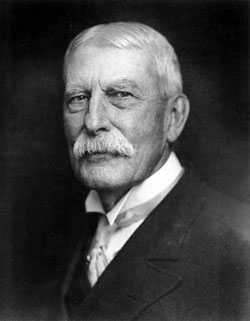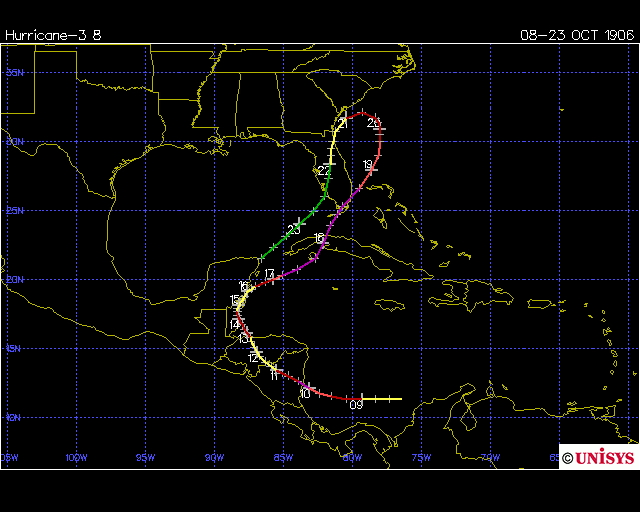
(Flagler Museum)
On the morning of October 18, 1906, a severe hurricane swept through the Florida Keys and across south Florida, destroying homes, killing scores of people, and nearly killing a railroad.
The storm’s tortuous path began as a disturbance moving along the southern reaches of the Caribbean Sea in early October. It wasn’t until it cleared the coast of Venezuela that a circulation became established. Moving westward, it quickly strengthened into a hurricane before coming ashore in Nicaragua on Oct. 10th. It weakened as it moved northwestward over Central America, but caused much flooding and many landslides. It ruined banana and rubber plantations and collapsed many buildings resulting in millions of dollars in damage.
The storm began to regain strength as it briefly moved over the Gulf of Honduras and struck British Honduras on Oct. 14th. It reemerged over the Caribbean and rapidly intensified before making landfall on the Isle of Pines on Oct. 17th. It passed over the island of Cuba that evening causing dozens of deaths and ruining the banana and tobacco crops.
Cuba did little to diminish the winds. By the time it moved over the Keys, the winds were estimated at 120 mph (195 km/hr) and the central pressure measured at 953 mb (28.14 in-Hg). At this time, Henry Flagler’s Florida East Coast (FEC) Railway was constructing a spur from Miami to Key West. Many of the workers, when warnings for the hurricane were issued, were evacuated from tent camps to barges and houseboats for protection. But the storm surge swept over the boats, dragging men into the sea. Over 40 were rescued by a steamer in the area, but 135 perished.

(Unisys)
The hurricane moved northeastward along the Keys, and sank several steamers off Elliott Key. As it passed near Miami, the surge flooded the town and collapsed homes and churches. It cut all telegraph communications south of Jupiter as it moved out to sea. But the storm wasn’t done with Florida, yet. On Oct. 20th, its forward progress slowed and the hurricane looped westward toward South Carolina and Georgia. On Oct. 21st, the tropical storm moving southwestward hit Jacksonville and crossed the state. The system was tracked as a tropical depression as it made its way as far as the Yucatan Peninsula where it dissipated. During this long, hairpin course, the storm was responsible for over 240 deaths and US$4 million in damage.
It took nearly a year for the FEC to recover from the hurricane. Eventually, equipment was repaired or replaced and new workers hired and the spur completed to Key West in 1912. The railway was battered but survived several more storms, including a notable one in 1919. However, the infamous Labor Day storm of 1935 repeated the tragedy of workers (this time on the Overseas Highway) being caught and killed by a hurricane. And that tempest finally ruined Flagler’s railway enough that it was never repaired.